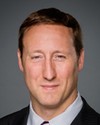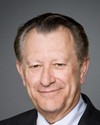Thank you, Ms. Gallant. I thank you as well for the long affiliation you've had with CFB Petawawa and the work that I know you've personally undertaken with respect to military families.
I would agree with you that the Canadian Forces have come a long way in the last number of years in efforts made to, shall we say, embrace military families in a more substantive way through programming and recognition at the bases for the need to invest in such things as child care, education in the broad sense, and support for families while soldiers are deployed. This has been a priority of the Chief of the Defence Staff. It has been a priority of the senior leadership of the Canadian Forces. Certainly General Walt Semianiw, who is here with us, bears both the responsibility and much of the credit for those advances.
You also mentioned--and I know the general will forgive me--Leslie Natynczyk. She has now taken on responsibilities, many of them voluntary, with respect to further advances in assisting both military families and those who are returning from deployment with deployment-related injuries, whether psychological or physical. She has taken a specific interest in programs such as the Soldier On program. Such programs are designed to assist those suffering deployment-related injuries and to assist as well in the family-related matters that you mentioned.
We are very much making this a priority in the Canadian Forces. This is very symptomatic of a modern military, a military that recognizes broader responsibilities that go beyond equipment and infrastructure. These concerns are very personal for the members of the Canadian Forces, because they impact directly on their family and their future. I am very proud of the advances that are currently taking place and that have already taken place. Again, it's an example of their professionalism and of the appreciation and affection that Canadians feel for their men and women in uniform.
To come back to the question of scholarships or support for young Canadians who wish to embark on a career with the Canadian Forces, money is available when it comes to education. Whether you're entering the Canadian Forces as a reservist or as a member of the regular force, there are education bursaries, and Royal Military College in Kingston, one of the finest education facilities in Canada, has scholarships to offer. At high school graduations I attended last spring, a number of young Canadians, including some from my riding in Central Nova, were given significant--we're talking tens of thousands of dollars--scholarships for entering the Royal Military College and other university programs that can lead to a career within the military.
Much of that information is available on the Canadian Forces website, and we have individuals now who are going to campuses and community colleges and universities around the country to make that information available.
I'll come back to your last question, Ms. Gallant, about the helicopters. We have purchased used helicopters with heavy lift and medium lift capability, for lack of a better term. They are in good condition and were maintained by the American forces. These Chinook helicopters were made available to us on an urgent basis so that we could get that capability into Afghanistan immediately, and we purchased them. They're there now. We're back in the business of that type of helicopter and have the previous capability that we had going back some years. We have also contracted to purchase 15 new “F” models, a modern version of the same helicopter that will serve us well into the future.
Mr. Bouchard has asked some questions about where they'll be based. The new helicopters that we purchased are piloted by Canadians. It took some time, of course, for the pilots to familiarize themselves with flying that type of aircraft. Some modifications, I believe minor ones, were made.
In order to have that capability, we had to invest. These are not unsophisticated machines. They are not available at your local Canadian Tire. They had to be modernized somewhat for our purposes. I'm not going to single out any other country, but Canada has a very high standard when it comes to maintenance and mechanics. We have people in the Canadian Forces today who are nothing short of magic. Imagine keeping a 45-year-old Sea King helicopter operable and available for missions. The same can be said of the Buffalo and of some of the aging Hercules aircraft that we use on the west coast. Those incremental amounts are meant to help maintain and upgrade certain aging equipment and to make certain modifications to equipment that was recently purchased.
Does that answer your question?






